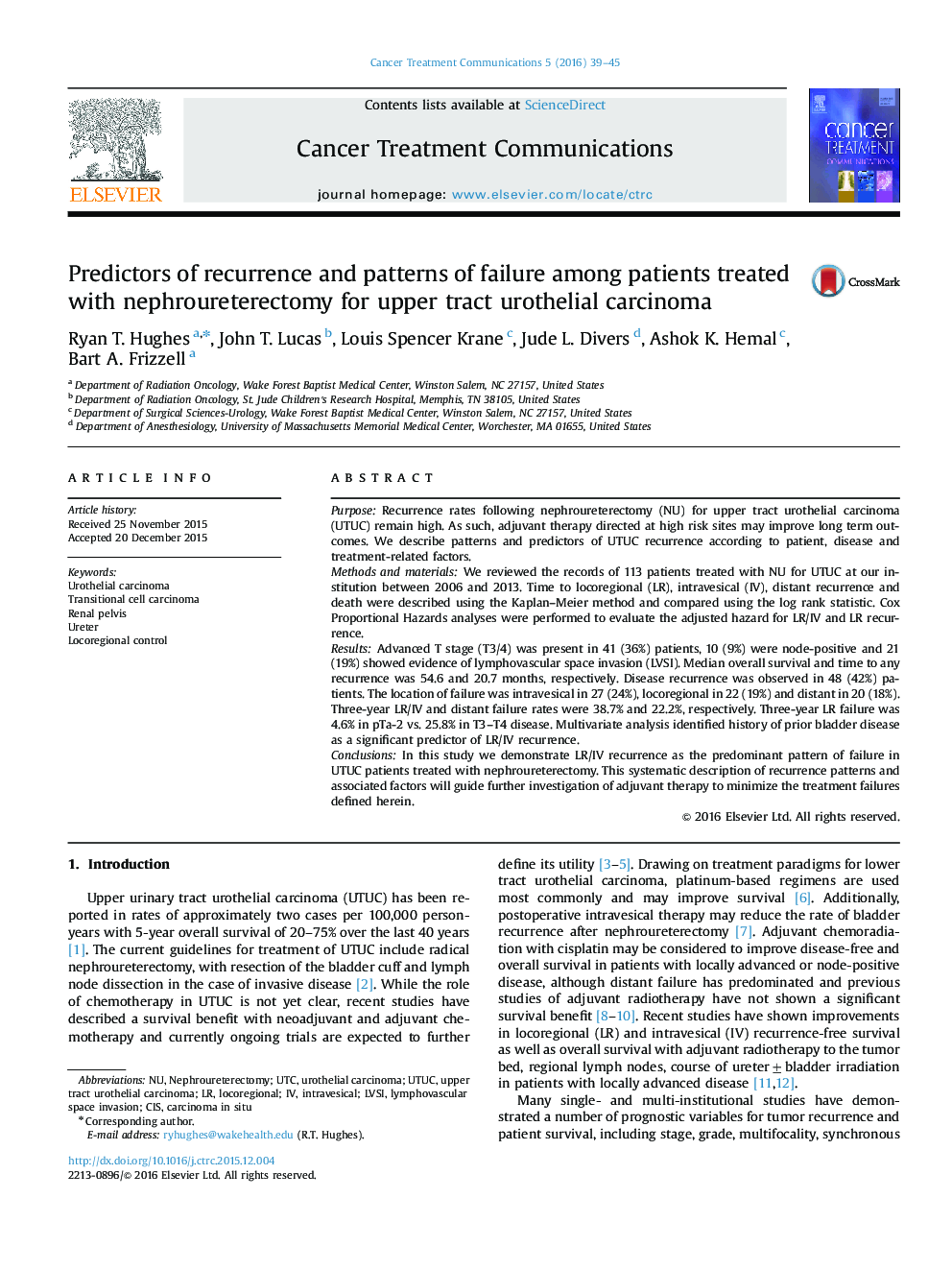| Article ID | Journal | Published Year | Pages | File Type |
|---|---|---|---|---|
| 6190215 | Cancer Treatment Communications | 2016 | 7 Pages |
PurposeRecurrence rates following nephroureterectomy (NU) for upper tract urothelial carcinoma (UTUC) remain high. As such, adjuvant therapy directed at high risk sites may improve long term outcomes. We describe patterns and predictors of UTUC recurrence according to patient, disease and treatment-related factors.Methods and materialsWe reviewed the records of 113 patients treated with NU for UTUC at our institution between 2006 and 2013. Time to locoregional (LR), intravesical (IV), distant recurrence and death were described using the Kaplan-Meier method and compared using the log rank statistic. Cox Proportional Hazards analyses were performed to evaluate the adjusted hazard for LR/IV and LR recurrence.ResultsAdvanced T stage (T3/4) was present in 41 (36%) patients, 10 (9%) were node-positive and 21 (19%) showed evidence of lymphovascular space invasion (LVSI). Median overall survival and time to any recurrence was 54.6 and 20.7 months, respectively. Disease recurrence was observed in 48 (42%) patients. The location of failure was intravesical in 27 (24%), locoregional in 22 (19%) and distant in 20 (18%). Three-year LR/IV and distant failure rates were 38.7% and 22.2%, respectively. Three-year LR failure was 4.6% in pTa-2 vs. 25.8% in T3-T4 disease. Multivariate analysis identified history of prior bladder disease as a significant predictor of LR/IV recurrence.ConclusionsIn this study we demonstrate LR/IV recurrence as the predominant pattern of failure in UTUC patients treated with nephroureterectomy. This systematic description of recurrence patterns and associated factors will guide further investigation of adjuvant therapy to minimize the treatment failures defined herein.
